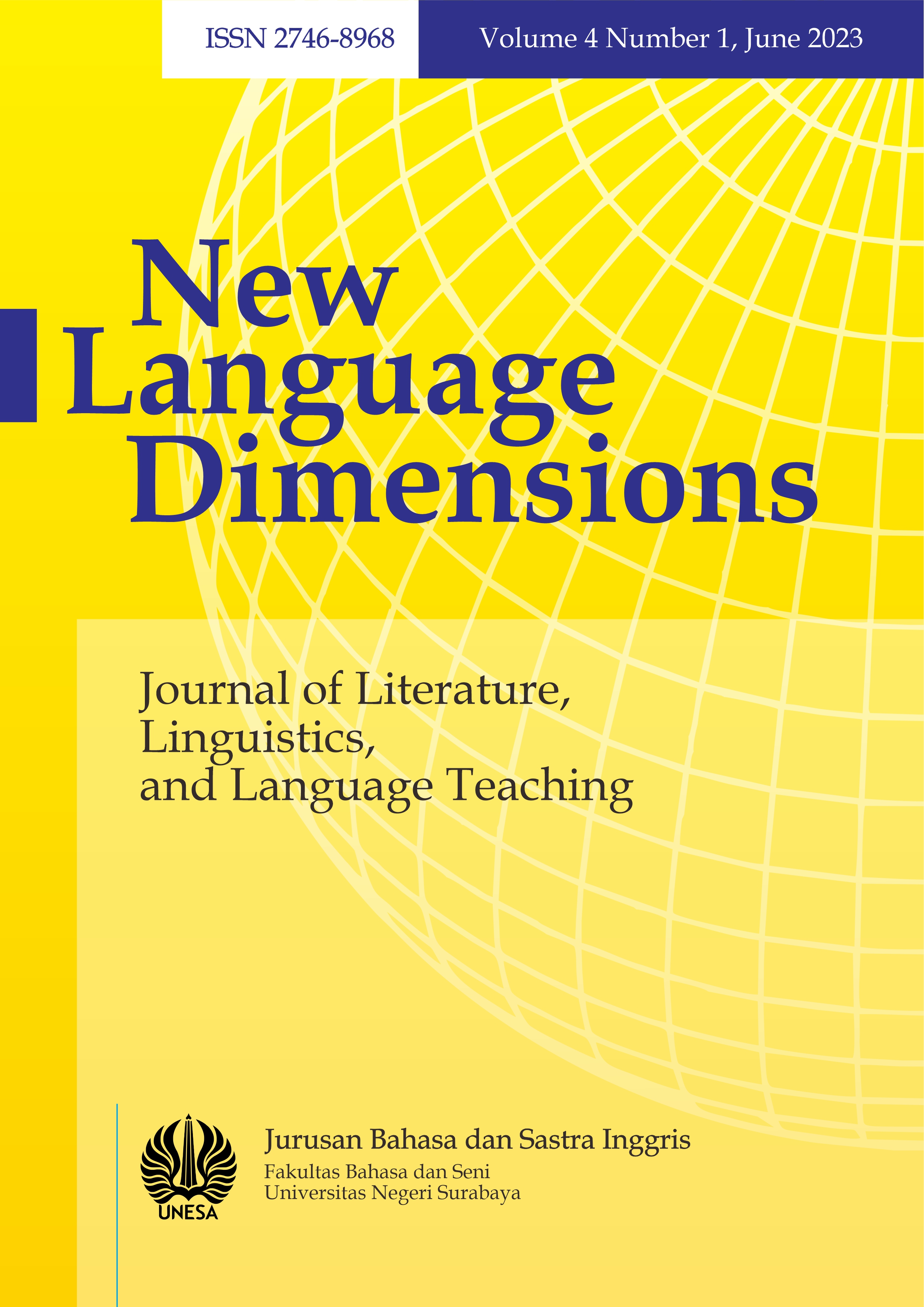Revealing the Educational and Product Slogans on the Streets and Offices in Tondano City: A Semantic Perspective
DOI:
https://doi.org/10.26740/nld.v4n1.p32-41Keywords:
linguistics, semantics, slogan, educational productAbstract
This study uses a qualitative descriptive method to obtain data through direct observation. There are three elements of semantic meaning, namely lexical, grammatical, and contextual. However, this study only analyses the lexical meaning. This study aims to determine the types and meanings of the slogans in Tondano, especially those taken in several streets and offices. The data is obtained as a result of this study through documentation, namely; (1) Slogans on the streets and offices in Tondano city consist of 2 types, namely Educational slogans around 15 slogans and Product slogans around 7 slogans. Educational slogans are sentences that contain meanings related to learning. Product slogans are a form of sentence that contains the meaning of promotions, tips, and notifications about goods. Slogans have lexical meanings to motivate every reader. Each slogan has its own meaning, depending on the type. Educational slogans influence the learning motivation of students, teachers, and all readers. Product slogans provide additional information about the product being promoted. Therefore, it is advisable to read the message on the slogan and apply it in everyday life. If so, then the messages contained in the slogans were successfully conveyed. Based on the semantic dicipline by the slogan analysis has change meaning. Its a differences on the simantic types as lexical, grammatical, and contextual. So, there are a similar an differen meaning about the slogan based on semantical analysis.
Downloads
References
Panambunan, E., Tulung, G. J., & Maru, M. G. (2016). Improving students'speaking ability through communicative language teaching of the second level students at 'MEC' Megalia English Course. Journal of English Language and Literature Teaching, 1(01).
Chaer, A., & Muliastuti, L. (2014). Semantik Bahasa Indonesia.
Hampp, P. L. (2019). Use of songs in teaching simple to be and past tense teaching. Journal of English Language and Literature Teaching, 4(1).
Lastri, D., Utomo, P., & Trianto, A. (2019). Analisis slogan di Kota Bengkulu. Jurnal Ilmiah KORPUS, 3(2), 145-156.
Liando, N. V., Sahetapi, R. J., & Maru, M. G. (2018). English major students' perceptions towards watching English movies in listening and speaking skills development. Advances in Social Sciences Research Journal, 5(6).
Sudarsono, L., Samola, N., & Maru, M. G. (2018). A discourse analysis of figurative language in Barrack H. Obama's speech. Journal of English Language and Literature Teaching, 1(01), 7-15.
Miles, M. B., & Huberman, A. M. (1994). Qualitative data analysis: An expanded sourcebook.
Sumanto, M. A. (2014). Teori dan aplikasi metode penelitian. Yogyakarta: CAPS (Center of Academic Publishing Service).
Downloads
Published
Issue
Section
 Abstract views: 231
,
Abstract views: 231
, PDF Downloads: 110
PDF Downloads: 110











